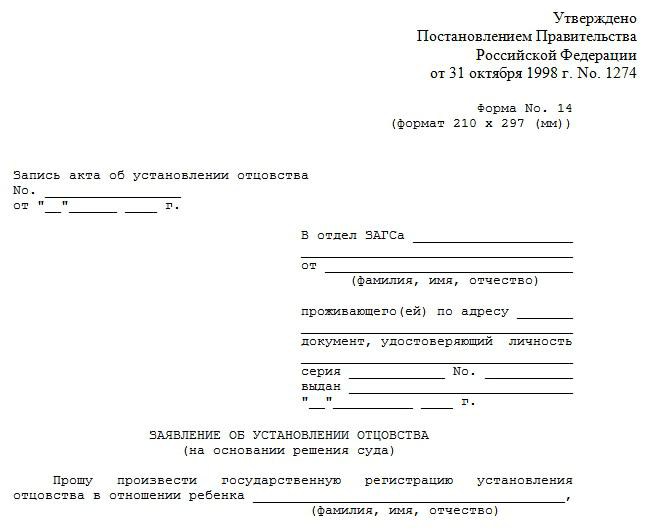More and more often in the world there is the so-called posthumous establishment of paternity. The institution of family and marriage, according to many citizens, has already outlived itself. And so some decide not to burden themselves with official registration. Moreover, if both parties are satisfied with this scenario, then often couples even have children without formal relations. So the situations are different. But no one is safe from life incidents and death. And if the biological father dies before the child reaches the age of majority, it is often necessary to carry out the posthumous establishment of paternity. This process has many features and nuances, as well as the rules for the design thereof. All of this remains to be found further.
Why is it necessary
The first step is to figure out why to conduct our today's process. After all, live in civil marriage and not burden yourself with anything - this is the choice of each pair. Why, after the sudden death of the biological father of the child, if such an unfortunate event happens, do extra paperwork?
Everything is extremely simple - the posthumous establishment of paternity gives certain property rights to a child born to a civil marriage. He can count on inheritance, the receipt of certain benefits, as well as compensation and compensation for harm caused to the deceased.
We can say that our today's process is exclusively mercantile in nature. In order not to burden yourself again, it is recommended that you simply officially register the relationship. But if you still need a posthumous establishment of paternity, you should prepare in advance for this process.
Where to go
It is worthwhile to figure out which instances you need to contact to translate our current ideas into reality. Otherwise, you will run for a very long time with a package of documents to implement the process.
The posthumous establishment of paternity (a sample application, as well as a list of all the necessary papers for establishing it will be presented below) is possible only in court. In other words, you must file a lawsuit in your district court. But in which one? There are several of them.
If you do not claim benefits and payments, only the right of inheritance is required, courts of general jurisdiction are suitable. That is, those that consider criminal and civil cases. But when it comes to the full realization of the rights associated with the posthumous establishment of paternity (payment of benefits and compensations, if any, to the deceased), you will have to go to a magistrate’s court. These are the rules that apply in the territory of the Russian Federation.
We are writing a statement
And now you can begin to collect all the necessary documents for the implementation of our ideas today. The first thing that is required of you is a statement of claim. Under the circumstances, the so-called special regime of conduct of business takes place. This is all because the defendant is not and cannot be. So the lawsuit is also made on a special principle.
Which one? How is paternity established posthumously? The statement of claim is written by the mother of the child. It should contain some non-standard information. First you must describe in detail all the circumstances and conditions of your life. And then pay attention to some key points.
For example, how long you lived in a civil marriage and how much was the life expectancy of a child with a biological father under one roof.The following indicates the place of your actual residence. Of course, it’s worth talking about the housing where you are currently living, and where you lived before, when the common-law husband was alive. The reason for the lack of registration of marriage will also need to be spelled out directly in the lawsuit. The goal of establishing posthumous fatherhood is also being written. And it is worth mentioning whether the father recognized kinship with the child. After that, you can collect the rest of the list of papers for the process, and then file a lawsuit with the appropriate judicial authorities. If you worry about the preparation in advance, then the whole process will not cause you much trouble.
Death certificate
So, the first thing you will be required to prove the death of a civil spouse. Fortunately, there is no problem providing this document. After all, a death certificate is issued after the death of a citizen.
You will need both the original and a copy thereof. Notarization is not necessary. The application for the establishment of paternity posthumously (a sample thereof is shown in the photo) is ready, now you should attach the death certificate of your civil spouse to it.
Lack of marriage
The next point, which is only worth considering, is the confirmation that officially the marriage with the baby's father has not been registered. How to get this certificate? You need to contact your local registry office. There, upon request, you will be given a certificate of this kind. Need the original and only him. No copies, even notarized.
In addition, evidence of the absence of a marriage may be birth certificate a child. If there are no entries in the column "father", then this confirms the absence of formalized relations. Indeed, otherwise this area would be filled to one degree or another.
Letters
The posthumous establishment of paternity (a statement of claim was presented to our attention earlier) is not such a simple process, if you think carefully. After all, there are few documents already listed. You will also have to additionally prove your connection with a civil husband.
What can be useful in this undertaking? For example, letters. If the biological father of the baby wrote to you and mentioned the joint child in the text, you can provide this as evidence of kinship. But here you will encounter one small problem - this is the establishment of authorship. Just because no one will believe that the letter was written by the deceased.
Under such circumstances, you should turn to special masters, called handwriting experts. They should conduct an examination and then give you an opinion on who the author of the letters is. If this is the real father of the child, then the proof takes place.
Virtuality
What's next? Among other things, instead of real letters, virtual means of communication can be used. Social pages on the Internet, ICQ, Skype and other messengers - all this is suitable for proving that the child was really from the deceased. Do not forget that mobile phones also belong here.
Again, there is a problem with the proof that some means of communication belonged specifically to the biological father. With a mobile phone, everything is simple - go to your service provider and ask him for information about a particular phone number. Let them show who owned the SIM card.
But purely virtual correspondence is a more complex issue. An exception is if the personal data of the father were confirmed, and also his passport data with verification are available. Otherwise, virtual correspondence cannot be regarded as evidence of paternity. Although often these letters are accepted by the court.
Witnesses
Disinterested witnesses may serve as further evidence.That is, if you have people who are able to prove either the kinship of the deceased, or the fact of living you in a civil marriage, be sure to indicate them in the statement of claim, and then invite to the meeting.
Who can be a witness in this case? Almost anyone you know. Friend, relative, neighbors - all these categories of citizens, if they can confirm your civil relations with the deceased, must be invited to a court session without fail. Perhaps their testimony is not enough to ensure the posthumous establishment of paternity. The necessary documents attached to the procedure, almost all are listed. There are still a few nuances - and you can go to court for a meeting.
Your personality
Among other things, it is worth paying attention to the fact that your data is also needed. And without fail. Both copies and originals. But what exactly is it about?
The establishment of paternity is posthumous (judicial practice is increasingly confronted with this feature) - this is a serious process. And you must not only attach the birth certificate of the child, as well as all of the above documents, but also provide the original of your passport. A copy including. Otherwise, the lawsuit will not be considered at all.
Are you ready to read all the documents? Then write a statement (lawsuit), and then contact the court of your choice and wait for the meeting. After passing it, as a rule, a decision is made according to which the deceased is recognized posthumously as the father of your child. Or you get a refusal. In practice, most often the first scenario occurs. Especially if the deceased citizen does not have any other children, no one else claims his property "in the first place".
The experts
But that is not all. Sometimes you can crank up an idea without much trouble. Only few people have such an opportunity. Why? Because you will have to worry in advance about proving the kinship of you, your child, and also your civil husband.
How exactly do you have to act? It is enough to conduct an independent examination to establish paternity. The results given to you will help prove the relationship between the deceased and the child. As a rule, there are no problems in court under such circumstances.
Sample
Now it’s worth looking at how your application will look. First of all, you must write the address of the court in which you apply. And after that, the text of the claim itself is already being drawn up. It looks like this:
With a citizen (initials of a civil husband) I, (your data) had a close relationship in the period from ... to ... and became pregnant. The situation was reported to the defendant, to which he (describe the reaction of his father).
In (the date of birth of your baby) I gave birth to a child (initials of a minor). Registration of marriage did not take place for a reason (describe the circumstances). My common-law husband is not recorded in the birth certificate in connection with (description of the situation).
And (date of death of the spouse) my spouse has died. During his life, he recognized the child as his own, confirmations are attached (list them, witnesses also belong here). We lived at (write the relevant data). In connection with everything that happens, I ask you to posthumously acknowledge paternity for my common-law husband (initials of the deceased).
At the end is the date of the appeal, as well as your signature. And this petition is filed in court. As you can see, there is nothing difficult about this. A posthumous paternity statement, the sample of which is presented above, is an almost universal template that is used by many citizens. After the issuance of a judicial opinion, you must contact the registry office to amend the paternity of the child. Take your passport, baby's birth certificate, court decision, birth certificate of the biological father. Usually even half of the listed documents will not be asked. That's all, the problem is solved. The posthumous establishment of paternity has been completed.A statement as well as evidence of kinship will help you in this process.



